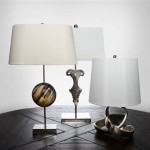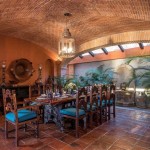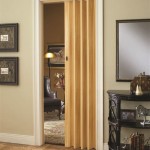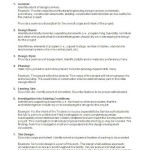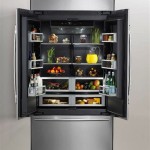The Interior of a Modern House: A Blend of Functionality and Aesthetics
Modern houses are renowned for their sleek lines, minimalist design, and emphasis on functionality. The interior design of a modern house reflects these principles, creating spaces that are both beautiful and practical. This article delves into the key aspects of modern house interiors, exploring the defining features and trends that shape their unique aesthetic.
Emphasizing Open Floor Plans
One of the most prominent characteristics of modern house interiors is the prevalence of open floor plans. Walls are minimized, allowing for seamless transitions between living areas, dining spaces, and kitchens. This open layout creates a sense of spaciousness and encourages a free flow of movement throughout the home. The removal of walls also maximizes natural light penetration, making the interior feel brighter and more welcoming.
Open floor plans are not only visually appealing, but they also promote a sense of connection and togetherness. With fewer physical barriers, families and guests can easily interact and share moments in various areas of the house. This openness also fosters a sense of fluidity, allowing for flexible use of space according to individual needs and preferences.
Minimalist Design and Functionality
Modern interior design embraces minimalism, focusing on simplicity and functionality. This approach emphasizes clean lines, geometric shapes, and the absence of clutter. Furniture and décor are carefully chosen to serve a purpose, with a strong emphasis on quality and craftsmanship. Unnecessary adornments are avoided, allowing the inherent beauty of the space and its furnishings to take center stage.
Minimalism in modern house interiors goes beyond aesthetics. It is deeply rooted in functionality. The use of multi-functional furniture, such as sofa beds or coffee tables with storage compartments, maximizes space efficiency. Built-in storage solutions, such as shelves and cabinets, help keep clutter at bay, contributing to a sense of order and tranquility.
Incorporation of Natural Elements
Modern houses often incorporate natural elements to create a harmonious blend of indoor and outdoor living. Large windows, sliding doors, and skylights maximize the influx of natural light, blurring the lines between interior and exterior spaces. The use of natural materials such as wood, stone, and bamboo adds texture and warmth to the environment, fostering a connection with nature.
Natural elements are not limited to building materials. Plants and greenery play a crucial role in enhancing the ambiance of modern house interiors. Indoor gardens, hanging planters, and strategically placed potted plants bring a touch of life and freshness to the space, creating a calming and invigorating atmosphere. Furthermore, these elements help purify the air, contributing to a healthier living environment.
Color Palette and Lighting
Modern house interiors typically feature a muted and neutral color palette, often incorporating shades of white, gray, beige, and black. These colors provide a clean and sophisticated backdrop for furniture and artwork, allowing them to stand out. Bold pops of color can be strategically introduced through accent pieces, such as throw pillows, rugs, or artwork, to add visual interest and personality.
Lighting plays a crucial role in shaping the ambiance of a modern house interior. Natural light is maximized through large windows and skylights, but artificial lighting is also carefully considered. A combination of ambient, task, and accent lighting is often employed to create a layered and dynamic lighting scheme. The interplay of light and shadow adds depth and complexity to the space, highlighting architectural features and enhancing the overall aesthetic.
Sustainable Design Principles
Modern house interiors are increasingly incorporating sustainable design principles, reflecting a growing awareness of environmental responsibility. The use of eco-friendly materials, such as recycled wood or bamboo, reduces environmental impact. Energy-efficient appliances and lighting fixtures contribute to lower energy consumption, while water-saving fixtures and landscaping practices minimize water usage.
The integration of sustainable design principles extends beyond individual choices. Modern homes often feature features like solar panels, rainwater harvesting systems, and green roofs, further enhancing their environmental friendliness. These features contribute to a reduced carbon footprint and a more sustainable way of living.

Ultralinx House Interior Modern Houses Design

20 Popular Modern Home Interior Exterior Features Extra Space Storage

Luxury Modern Interior Design Ideas Authority

Marquis Residences Interiors By Steven G House Design Luxury Homes Modern Houses Interior

Interior Design Ideas Homes Home Bunch

Modern Interior Design Style Ideas For Homes In Nsw Mcdonald Jones

Modern Interior Design To Transform Your Space Designcafe

5 Amazing Modern House Design Ideas You Must See Livspace

Modern Interior Design Style Ideas For Homes In Nsw Mcdonald Jones

Houston S Most Gorgeous Modern Houses 9 True Trendsetters Highlighted In Much Anticipated Home Tour

